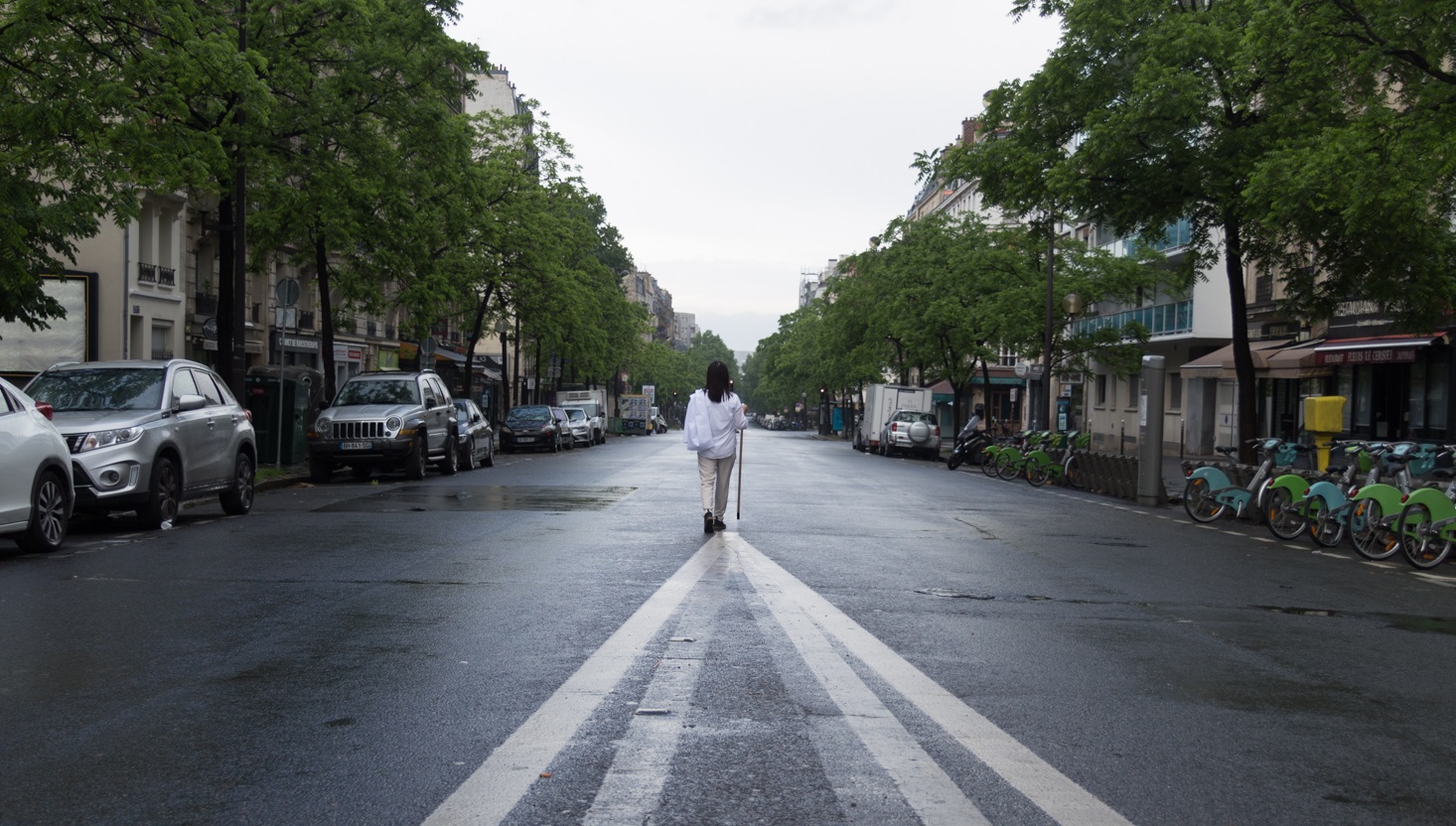
Confiné·e·s
- performance
Several artists proposed an artistic action/reflection based on our common situation of confinement.
Confined Public Space
Cifas has been interested by artists working in public space for 10 years, thus investing the city as an open space for reflection and action, organising workshops, debates and artistic interventions.
In this public space, the role of the artist is complex and varied: disrupting our aesthetic habits, developing tools for social cohesion, contributing to urban renewal projects, etc... The artistic strategies to be deployed in the public space meet necessities and constraints that are very different from the spaces usually reserved for art (theatre or exhibition spaces).
Today, however, with the COVID-19 crisis, public space is suffering: it is no longer possible to move around, cross each other, or get together. A social shock that we all experience, confined to our private spheres. So how do we make art at a time when everyone fears for their health and that of their loved ones and wonders when and how it will be possible to return to urban life? Is there an art of confinement? What artistic strategies should be deployed in order to create in this context? What has become of public space today?
In these delicate times when it is necessary to be attentive to ourselves and to others, we would like to invite several artists to propose an artistic action/reflection starting from our common situation of confinement and its consequences on the notion of public space.
Victoire pour la santé! (BE)
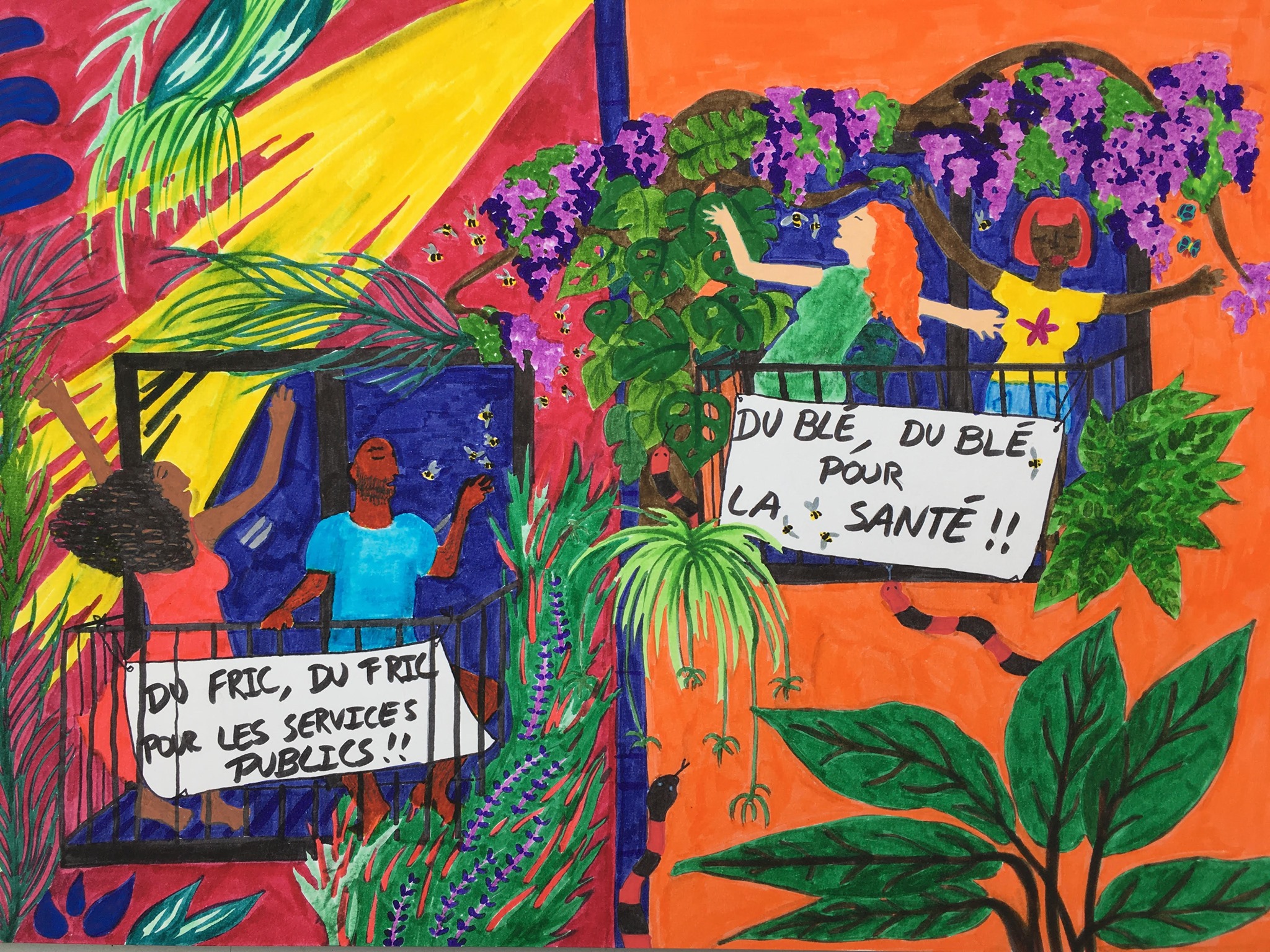
VICTORY FOR HEALTH is an initiative by inhabitants of the Rue de la Victoire in Brussels (in the disctrict of Saint-Gilles, Belgium) for World Health Day. For this special day, we proposed you to participate from your window in a collective and creative action.
We declare that Rue de la Victoire becomes from today a departure point for the propagation of solidarity. We invite all inhabitants of the street - and all those who wish to do so, from here and elsewhere -, to join forces and deploy their creativity by participating in this event.
Here are many ways to get involved:
- Write your messages on banners (made with a sheet, paper or cardboard…). Don't hesitate to make some for your neighbours! Here are some ideas for messages: https://urlz.fr/chIP
- Install banners on your windows, balconies, front doors... already in the morning of Tuesday 7th April.
- Learn the lyrics of the "Song of Remedies" and sing loud and clear, all together, on Tuesday 7th April at 8pm (see the karaoke version on Loop-s page).
- Share the event with the hashtag #health4all and/or #healthforall
- Take photos, make videos, record yourself during the event to make the action visible. Send your files so we can edit a film -> victoirepourlasante@protonmail.com.
- Help us to mobilise the whole Rue de la Victoire and/or your own street!
This initiative has been imagined as a response to the campaign "Our health is not for sale" of the collective of health workers LA SANTÉ EN LUTTE and the European Health Network. Through this action, we wish to support health workers (carers, cleaners, nurses, doctors, stretcher-bearers, etc...) and become spokespersons for their demands! The liberalisation of the sector has led to a decline in the quality of care. It is no longer acceptable to ask public services to do more with less in order to increase profitability for the benefit of private interests.
Thanks to Loop-s and Cifas Asbl for their support in the realisation of this event. Thanks to Anna Muchin for the composition of the song Flatten the curve.
Thanks to Radio Panik for helping us to broadcast it. Thanks to Réseau Ades, Rise for Climate Belgium, La Bellone, La Maison du livre for their support to the communication of this event.
To support the Collective LA SANTÉ EN LUTTE: https://growfunding.be/fr/bxl/lasanteenlutte
Link to the international call for action during the World Health Day: https://www.facebook.com/events/549550719025438
More info : victoirepourlasante@protonmail.com
Stephan Goldrajch (BE)
Stephan Goldrajch is a visual artist from Bruxelles. He works with textile materials from which he creates masks, embroidery, installations, drawings, legends, performances... His approach is based on the imperative of social ties.
A lost sense
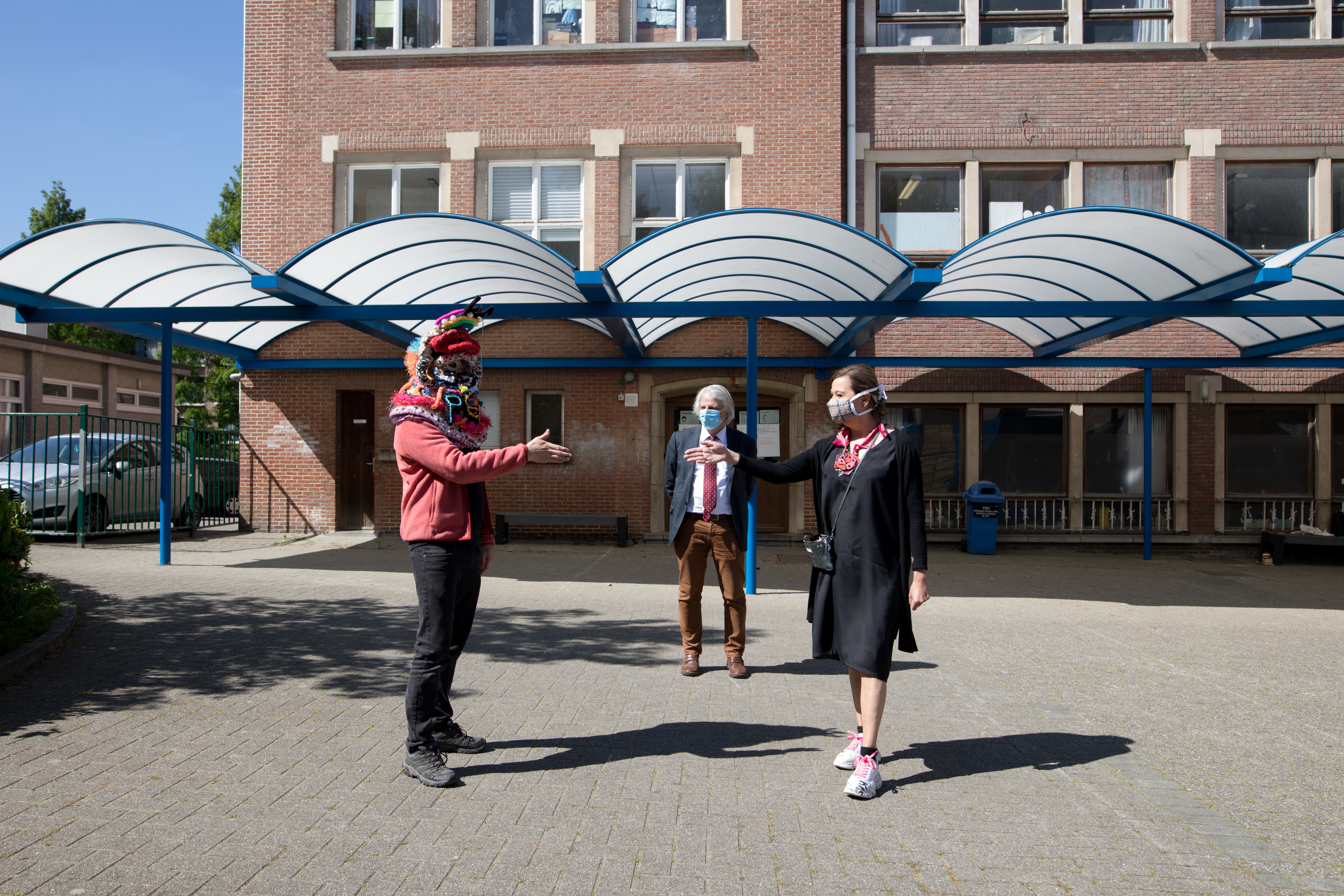
As a response to our proposal, Stephan Goldrajch wanted to meet and question deaf people about communication difficulties they encounter in this new world where everybody wears a mask.
To do so, he first created a knitted and crocheted mask that he called "A lost sense".
This mask was then drawn and passed on to many deaf people, including several specialized institutions. The IRSA (Royal Institute for Deafs and Blinds) commissioned a fresco of it that Stephan created in the schoolyard, it was then coloured by the students.
The fruit of the many encounters made possible by this project will be expressed in the public space in a new stage of work.
Sheila Ghelani (UK)
Sheila Ghelani is an artist whose work spans performance, installation, participatory event and moving image. She is very interested in the practice of medicine and care and the relationship between art and science with particular focus on hybridity.
We had invited her in 2015 during the Urban Academy devoted to "Art Facing Terror", and this time we proposed her to reflect on our new world in crisis.
She starts her reflection by taking several starting points: the idea of care, her instinct around her reluctance to respond to the present moment through art, the public space in relation to gardens, and perhaps her dreams, because even if she is confined, she still finds herself in the public space and interacting with others every night while she sleeps...
She describes her process:
Making the piece. The process…
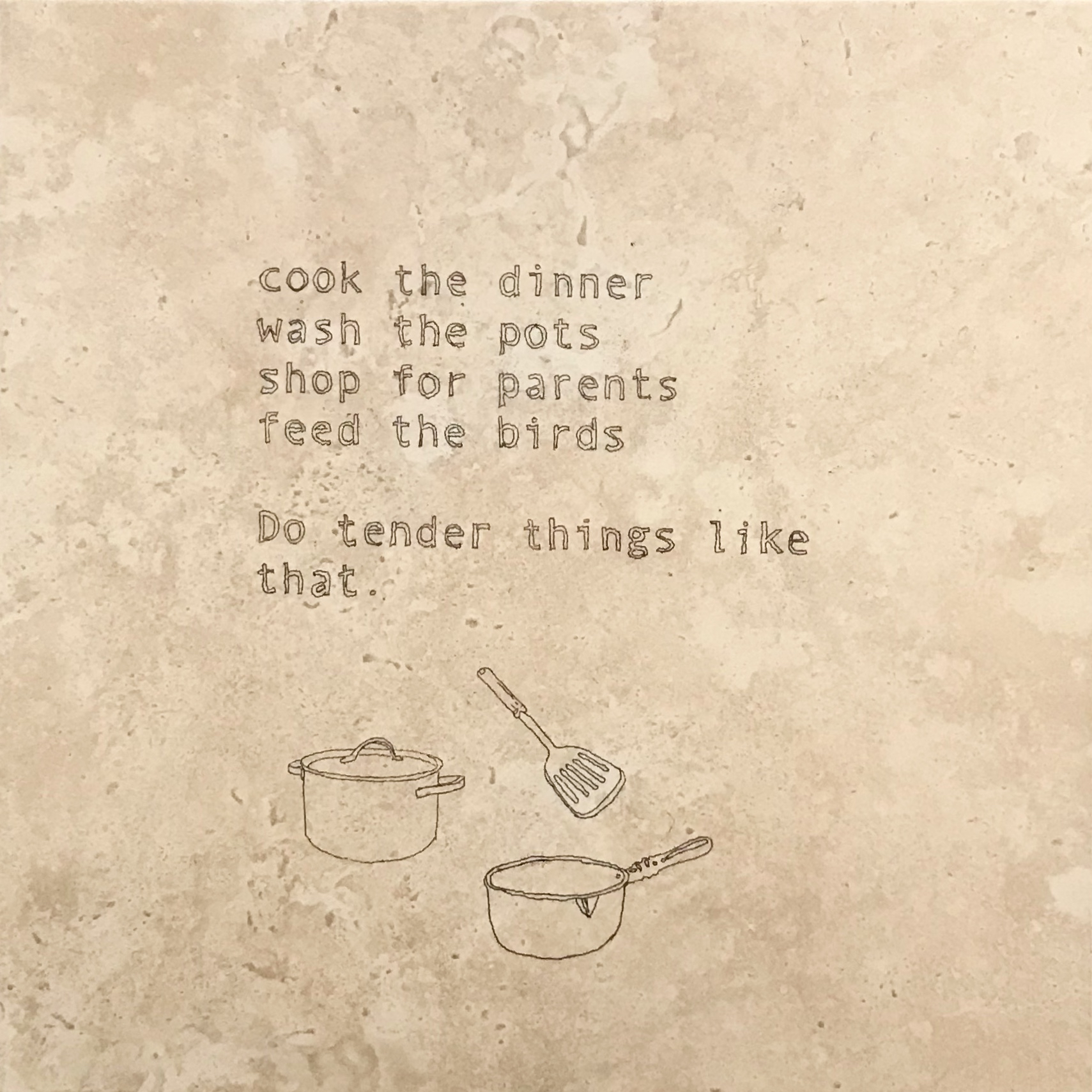
When the Cifas invite first came in I wasn’t sure whether to say yes or not. I wanted to spend my time with my parents - whom I’d come to help out during the pandemic, to do the chores and just be present with my already unwell (but not from Covid) mum.
Care, something I make work about often, was either everywhere I looked (at last), or lacking in such a monumental and profound way that institutional change or all out revolution was what was needed, not me and my art… I was reluctant to contribute to the noise.
Plus I could feel in amongst it all that turning to my practice would make me face some things that I, for the moment at least, wanted to pretend I could keep at bay - death, grief, the imminent collapse of the delicate arts ecology I was part of (most of my work had been cancelled, but not all).
But then outside in the garden, whilst tending to the ‘forget-me-nots’, a new space in my thoughts seemed to open up. A reflective space. A rehabilitative space:
What were the consequences of confinement on the notion of public space?
If I went slow perhaps… split up the ten days I was being invited to spend on the subject… only worked when I could (because caring for ourselves and caring for others takes up time, expends energy), perhaps I could say yes…
And so that’s what I did.
At first it felt every bit as complicated as I’d thought it would be. I wasn’t in my own home and so I didn’t have any of my stuff - my camera, access to my studio, my materials. My usual patterns of making were broken.
But then Mathilde from Cifas said something about starting small, and I found myself typing up a list of my daily actions (making a kind of diary I suppose) under the title ‘some small acts of care’…
The list felt like a counterpoint to those heavy feelings I was experiencing now the art-making had begun. It simply described the care and maintenance of life, another type of essential work and labour, but one that happened daily behind closed doors. Perhaps what I was doing with this piece was making public a series of everyday acts of care (usually performed in private)?
The one art-making tool I had brought with me was some carbon transfer paper to complete an idea for another project (now suspended), and so I turned to that. I started tracing out my words and thinking about how they might be arranged… I imagined them on a white tile, hospital-like.
Looking around the house for something similar (to hold in my hands and stare at) I ended up in the garage, and to my surprise found some exactly like I’d imagined - some old bathroom tiles.
I’m not sure how I first decided to trace onto the tiles directly, but I do know that it was immediately really pleasurable. A non-permanent action without the right chemicals and certain processes of course, but slow, contemplative and much better feeling than doing it straight onto paper.
But the white ones didn’t photograph well - they were too shiny - and in any case, maybe weren’t quite ‘right’.
I went back into the garage again as I’d also seen a few spare kitchen floor tiles lying about. At the time I’d rejected them as they weren’t white, but perhaps they’d photograph better? Plus what better place to trace out my daily actions than onto a kitchen floor? The very room which I myself had walked over, prepared meals in, washed up and wiped clean, over and over and over again… Just like what I was going to do to the tiles at the end of my ten days (wipe them clean).
And so that’s what I did.
I think this piece, which exists currently as a set of photographs (the only trace of my words and actions), could one day also perhaps become a set of cards - moving through public space in another way. Passing lightly through many hands, containing private messages sent from one person to another.
Or equally still be reproduced as tiles to be placed somewhere in public. As a kind of memorial to an experience, that took place in the UK in an unremarkable house, in an unremarkable suburb in March, April, May and June 2020…(where I still currently am)… an experience replicated in lots of other households across the country, over and over and over again.
Making the invisible visible for a moment. Before once more returning the tiles back to the garage where I first found them…
Casting a circle to protect my parents? casting a circle to protect us all?
Ondine Cloez (FR/BE)
Ondine Cloez is a choreographer and performer from Brussels. Her singular gaze reveals things that we don't always see, a priori. Her first piece, Vacances vacance, is about emptiness, vacancy, and not being quite where we are expected.
Ondine proposes a walk through Laeken while we are slowly coming out of confinement. Starting from the ringing bell of an empty school, we go along the canal, we follow pavements, walls, but above all we discover a green urban space where dozens of essences have mingled and spread out during the long weeks of calm. Ondine shifts our gaze on this city that is waking up, flourishing, and offers us to perceive the slight changes brought about by the confinement.
Her text (in French) is here for download.
Promenade confinée
https://vimeo.com/431788904?embedded=true&source=vimeo_logo&owner=9863127
C’est une promenade qui traverse Laeken, où j’habite. J’ai parcouru cette boucle des dizaines de fois. Le silence qui y régnait au tout début a peu à peu été recouvert par les bruits de la ville. J’aurais aimé enregistrer ces étranges silences citadins mais au moment où j’ai pris mon zoom, ils avaient déjà disparu. La promenade était la même. Ce qui avait retenu mon attention était toujours là. La promenade n’a plus le même caractère qu’il y a deux mois mais les plantes qui la jalonnent y sont toujours. Les multiples et minuscules témoins de ce changement de volume sonore. Certaines ont disparu, entre temps d’autres ont fleuri, d’autres ont fané. Elles se sont étalées, ont été touchées par des maladies, envahies pas des pucerons. Les odeurs ont un peu changé. Mais finalement elles n’ont pas bougé.
Maintenant nous allons traverser des parcs, des bois, nous allons voir des canards et des rats, Il y aura peu de bruit, peu de voitures, peu de cris, peu d’avions.
La promenade peut commencer à 11:40.
Vous vous tenez devant l’Athénée Marguerite Yourcenar. Si vous avez respecté les horaires, vous entendez une sonnerie, assez courte, quelques secondes. Elle indique le début ou la fin d’un cours. Mais, bien sûr, il n’y a personne dans la cour. Pas d’élèves. Où sont ces personnes adolescentes ? Elles sont à la maison ou entre ami. Peut-être se promènent-elles le long du canal. Peut-être connaissent-elles une promenade qui dure le temps de la pause de midi, en partant à l’heure, elles seront rentrées à 13:30. Elles mangeront en marchant.
C’est cette marche que nous allons faire. La cour est vide, on la voit au travers des grilles. Vous quittez cet endroit un peu trop calme, vous prenez la direction Nord-Est jusqu’à arriver au Canal. Vous le longez. Vous allez le longer longtemps. Gardez toujours le canal sur votre droite.
Arrivée au premier carrefour, Outre-Ponts. Il y a quelques voitures qui passent, deux ou trois. Il n’y a pas de camions. Derrière vous, des entreprises de béton arrêtées. De l’autre côté, des tas de ferrailles. Sous un des tas il y a un tramway. Sur votre gauche la Cathédrale Notre Dame de Laeken. Faites attention en traversant car le pont forme une petite montagne et si une voiture électrique arrivait, vous ne la verriez pas, vous pourriez vous faire renverser. Attendez bien que le piéton soit vert pour continuer.
Vous avez traversé le passage piéton et vous êtes devant un gros buisson aux fleurs rose pâle. C’est un Rosa Canina, un rosier des chiens. Il s’étend sur plusieurs mètres, vous le longez.
L’eau est toujours sur votre droite, elle est opaque et bien en dessous de vous. Si vous vous penchez légèrement, vous verrez peut-être des rats flotter. Ils sont morts et ils flottent, le ventre gonflé, les pattes avant comme jointes, comme s’ils faisaient la planche. Ils se sont fait expulser des égouts hier, il n’avait pas plu depuis des semaines, les égouts se sont trop remplis et ils ont fini leur vie dans le canal, car comme dirait Monsieur Hermann, capitaine de port: « Pour votre information, ce genre de scénario se produit surtout après de fortes pluies, quand les égouts ne peuvent plus absorber le volume d’eau et qu’ils débordent dans le canal (c’est toujours mieux que dans les rues !) ».
Reprenez votre route, suivez la ligne de platanes. Passez sous le pont de chemin de fer. Juste après regardez vers la droite : il y a un pêcheur. Descendez les six marches et mettez-vous au même niveau que lui. Vous êtes plus proche de l’eau. Vous êtes maintenant à quelques mètres de l’eau, vous êtes descendu·e. La ville, les routes, les voitures, les vélos ne voient que votre tête qui dépasse. Vous marchez sur un mélange de sable et de cailloux, de la poussière se soulève derrière vous. A gauche de vos pieds, dans l’angle entre le mur en briques et le sable : pissenlits, buphtalmes à feuilles de saule, plantains, anémones sauvages, oxalys à petite corne.
Au deuxième étage mais plus loin (il y a un trottoir parallèle à votre chemin, de l’autre côté de la route, personne n’y marche jamais). D’ailleurs vous ne vous en apercevez pas, mais le chemin sur lequel vous marchez actuellement descend très légèrement. Si légèrement qu’avant que vous ne vous en rendiez compte, ce qui était le deuxième étage est maintenant hors de portée de votre vue, le mur qui faisait seulement un peu plus d’un mètre fait désormais plusieurs mètres. Car le deuxième étage est incliné, mais vers le haut. Si bien que pendant que vous vous rapprochiez du canal qui est maintenant à moins d’un mètre – alors qu’au début de la promenade il était à huit mètres en dessous de vos pieds –, la route est maintenant quatre mètres au-dessus de vous. Et sur cette route se trouvent toujours, même si vous ne les voyez plus : coquelicots, pieds d’alouette, marguerites communes, centaurées, bourraches. Au deuxième étage, les fleurs sont plus grandes, elles prennent plus d’espace sur le trottoir peu utilisé.
A la bitte d’amarrage 35c, tournez la tête vers la diagonale droite. Vous verrez, côte à côte, deux arbres de la même taille, peut-être du même âge mais de nature tout à fait opposée. Tout diffère: couleur, forme, densité, feuillage.
Un petit peu plus loin, un mur végétal. Puis un deuxième.
Quand vous voyez la famille de canards dans l’eau, montez les escaliers, faites demi-tour, contournez divers haies et buissons – de ce genre qu’on installe en ville pour ne pas avoir à trop s’en occuper. Prenez encore les escaliers et refaites demi-tour. Vous êtes revenu·e dans le sens de la marche.
Un autre pont vous attend, un embranchement chaotique avec tramways, bus, camions et voitures. Vous avez de la chance de le voir si calme. Ça n’arrivera plus. Continuez encore tout droit, jusqu’à ce que vous vous retrouviez le visage à seulement un ou deux mètres de la cime des arbres. Le canal est descendu, vous êtes remonté·e.
Évidemment le canal n’est pas descendu, vous, par contre, n’avez pas cessé de descendre et de monter. Et votre point de vue aussi. De dessus, de dessous, de côté : vous regardez rarement à hauteur de vos yeux.
Après la lavande et les graminées, prenez le passage piéton et entrez dans le bois. C’est un bois étroit, entre deux voiries, que vous allez traverser pendant une quinzaine de minutes. Il commence comme un chemin étroit et s’élargit au fur et à mesure. Quand la piste cyclable le quitte, vous verrez un groseillier sur la gauche. Puis des parterres d’orties, des parterres de ronces, de lierre. Au milieu de ces plantes couvre-sol : de l’éclaire, du lierre terrestre, de la bourrache sauvage, des fougères. En haut, beaucoup de fleurs de sureau.
Au milieu de ce bois vous verrez une culture de plantes aquatique, c’est un joli point de vue, elles s’étalent sur plusieurs dizaines de mètres et sont recouvertes par des filets en forme de tunnel, alors que la perspective finit sur, justement, un tunnel.
Si les groseilles sur le côté sont mures et que vous arrivez à les atteindre, goutez-en quelques-unes.
Au bout de ce bois vous longez un jardin composé principalement d’érables et de rhododendrons. Ils sont en fleurs. Au bout, traversez les lupins et longez la végétation de sous-bois entre le mur et le trottoir. C’est un nouveau mur. Le mur que vous aviez sur votre gauche depuis trente minutes délimite une seule propriété que vous avez longé sans songer un seul instant que vous contourniez une propriété royale.
Vous longez donc maintenant un nouveau mur sur une centaine de mètres et arrivez à l’entrée d’une prairie faite de trèfles, renoncules, lierres terrestre, graminées, pâquerettes. Elle est coupée à ras. Devant vous des collines aux sommets arrondis. Une vallée à traverser. Elle est de taille réduite, vous n’aurez pas besoin de plus de quelques minutes pour cela.
Longez le chemin de fer et les pulmonaires, orties, bardanes, alliaires, tanaisies. Arrivé·e en bas tournez la tête sur la droite : c’est l’Atomium.
Vous rentrez par une grille dans un jardin, une autre prairie, mais en partie non taillée. Longez les rhododendrons fanés. Vous allez traverser une sombre forêt de pins, marronniers, ifs, robiniers, peupliers. Le sol est presque entièrement recouvert de lierre.
Passez par le petit tunnel et remontez le verger jusqu’à passer entre les rhododendrons et les poiriers, continuez votre ascension et rendez-vous au jardin du fleuriste. Mélisse, buis, cerfeuil musqué, véroniques, échinacées, lys des crapauds, hortensias, euphorbes, primevères, muguet, anémones, callune, bruyères, nigelles, camélias, lavande, géranium sauvage, et bien d’autres fleurs encore.
Retrouvez le mur royal de l’autre côté de la route et passez par le petit chemin boisé. A la grille, tournez à droite et descendez la rue jusqu’à Notre Dame de Laeken. Ne marchez pas sur l’angélique, les pissenlits, la laitue sauvage, les coquelicots qui poussent sur le trottoir.
Au cimetière, longez son mur pour vous retrouver derrière l’église. Un couple de faucons pèlerins s’y est installé
Prenez la rue du champ de l’église et continuez tout droit jusqu’à la place de la maison rouge. Rejoignez la place des justes et asseyez-vous au pied d’un des deux platanes. Au niveau de votre visage : coquelicots, mauves, marguerites communes. Les platanes sont là depuis plus d’un siècle et la promenade a duré moins de deux heures.
La sonnerie de l’Athénée retentit.
Il est 13:30.
Ondine Cloez
Mai 2020
Annabelle Guetatra (BE)
Hyménée de printemps
It's the story of a woman who dreams...
This morning, she prefers not to wake up, keep her eyes closed and remember.
Summer, on the beach. A blazing sun, the fresh air of the seaside. She's in love.
Confinement has limited public space and forced us to stay at home, with the inner journey and the imagination as only possibility of travel.
When we close our eyes, we can be everywhere and with anyone.
Each of us dreamed of a Spring Union, and we came together in the creation of this little animated film made with little time and little material.
Annabelle Guetatra is a cartoonist. Cifas has called upon her dreamlike, delicate and sensual universe to illustrate its activities on several occasions.
Even if her work is usually centered on intimacy and interiority, this time we have proposed Annabelle to turn her gaze towards the public space.
Her answer is an animated film based on a text written by her sister Kahina Le Querrec.
The original music was composed by Kévin Malfait.
Annabelle Guetatra
Born in Colombes in 1985, Annabelle Guetatra lives and works in Brussels.
Represented by the DYS Gallery, she develops a practice of drawing in different declinations: loose paper, sheets assembled in books, papier-mâché figurines, ceramics, engravings, animation... The scenes she draws invite us as if we are witnessing a performance, they give us to see mysterious but well embodied bodies playing some absurd mimodramas, abstruse choreographies or other enigmatic dance steps. Love scenes caught in flagrante delicto, where the characters are adorned with props, masks, strange vegetation, furniture or not really identifiable animals. This masquerade, inspired by childhood stories or travels (sometimes dreamt of), tells us about life, its desires, its anxieties, its magic and its strange cruelty.
Kahina Le Querrec
After a degree in performing arts and cinema at the University of Paris 8, Kahina Le Querrec became a costume designer for feature films.
In 2018, she joined the Ateliers du Cinéma in Beaune (France). There she directed La Fête Noire and a short fiction film L'Heure Bleue (selected at Paris Courts Devant, at the Bordeaux International Independent Film Festival and Best Short Film Award at the Oldenbourg International Film Festival).
In 2019, she attends a screenwriting workshop where she develops her next short film Contre La Nuit, winner of the G.R.E.C. (Groupe de recherches et d'essais cinématographiques) screenplay selection.
Kevin Malfait
After two years of training at the CIAM, Kevin Malfait continued his musical studies by entering the Bordeaux Conservatory in the jazz section and then the Mont-de-Marsan Conservatory. In 2016, he composed a film-concert with Clément Bernardeau on the last of F.W. Murnau's men. Still with Clément Bernardeau, he composes and interprets the music for the pieces Motif and D'après nature of the choreographic company la Tierce which premieres in December 2018 at the TNBA. He regularly collaborates with the Bordeaux artist Geörgette Power. Since 2016 he forms with actor and director Romain Jarry (Cie des Limbes) the musical and textual duo je ne sais quoi. For a few years now, he has also been composing for the cinema and signs in October 2018 the soundtrack of Giovanni d'Onofrio's Second Attack on the Bakery, then in 2019 the soundtrack of Selim Bentounes' Petit Coeur and Winnele Veyret's Yamb. At the end of 2018 he releases a first instrumental EP under his name.
Rajni Shah (UK/AUS)
Arriving and arriving and arriving
Since 2012, Rajni has decided to walk away from a career in the arts in order to focus on research around listening and gathering as political acts. In spite of this, we wanted to submit to them our questioning on the confined public space.
Rajni responded enthusiastically and has written a text about their travel, feelings and observations during the pandemic. The text is here attached or can be read on Rajni's blog.
In addition, here are some words Rajni has written about the experience of working with Cifas during this time:
"I was overjoyed when Charlotte got in touch with me to ask whether I might like to be part of the ‘confined public space’ project. I understood from her words that there was a generosity in this act: that Cifas wanted to support artists, with time and care, and that there was no pressure to produce anything. This kind of support feels like it is part of building a world in which value systems centre around listening and process in ways that are often completely absent from the world of professional art or even community arts. It felt right to me. At the same time, at the time when the invitation was made I was still being paid as part of a research position I held for two years at Concordia University. So I asked Charlotte if my fee could be paid to another artist, who was not on salary, and whether this could be part of the work. It felt like, in response to Cifas modelling generosity, redistribution of funds, and trust, I could do the same thing. So I accepted the invitation, and used the time to write the blog post attached here. But I was also able to gift the funds to someone who needed them more than me in that moment. The person I gifted them to expressed the meaning of this better than I could:
“It was a give and receive moment that was so beautiful and without condition … And if we could all feel that between each other, we would be extremely powerful and in such a different place. We wouldn’t be able to turn a blind eye and get on with capitalism any more. We just wouldn’t be able to.”
Here’s to not being able to turn a blind eye and not being able to get on with capitalism any more!"
Rajni Shah, Sydney, June 2020
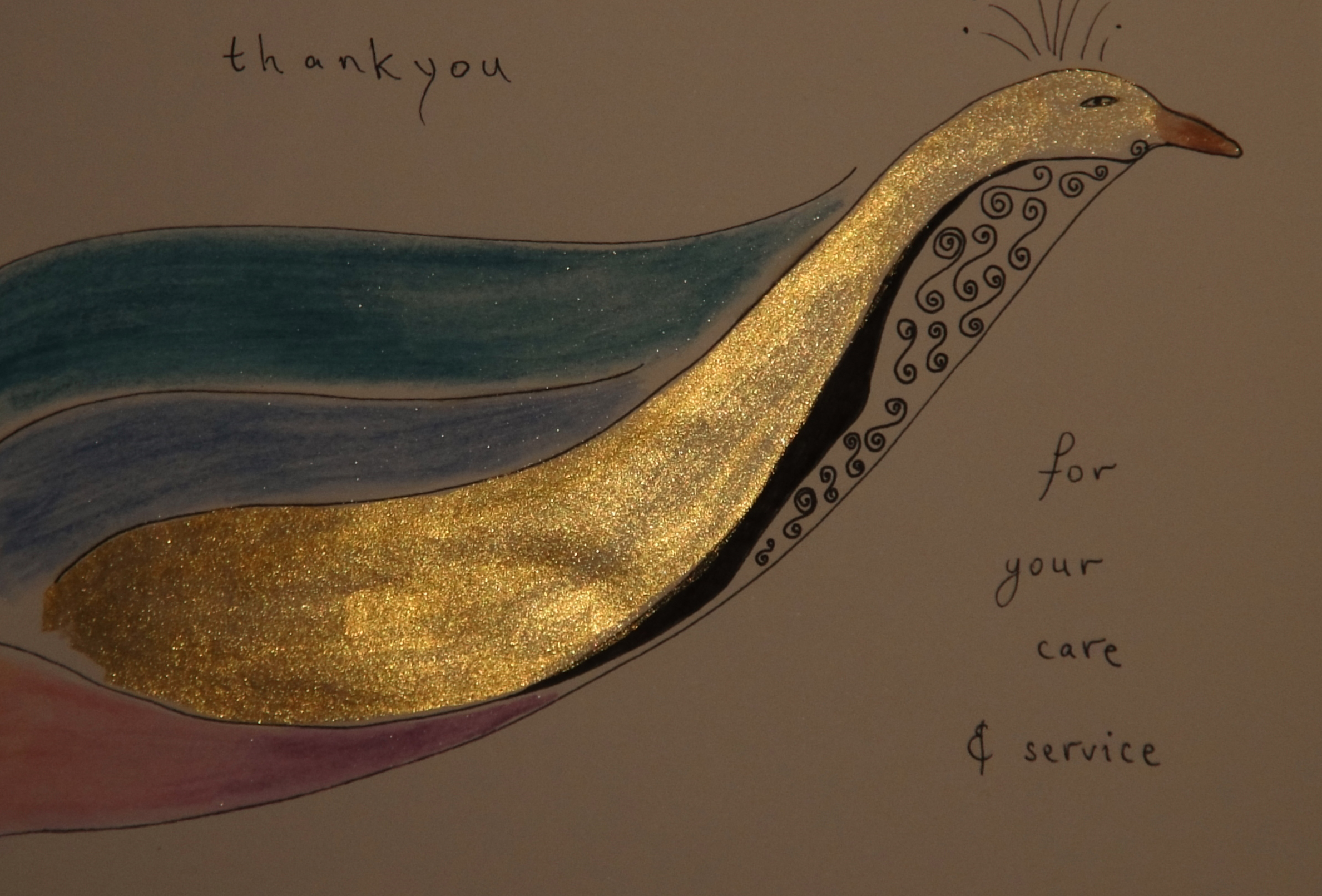
Rajni Shah is an artist whose practice is focused on listening and gathering as creative and political acts.
Key projects - always created alongside and in collaboration with others - include hold each as we fall (1999), Mr Quiver (2005-8), small gifts (2006-8), Dinner with America (2007-9), Glorious (2010-12), Experiments in Listening (2014-15), Lying Fallow (2014-15), I don’t know how (to decolonise myself) (2018), Feminist Killjoys Reading Group (2016-2020), Listening Tables (2018-21), and Ropewalk (2019).
Archive of previous work: www.rajnishah.com
Kubra Khademi
The March of May 10, 2020
On May 10, 2020, last day of the strict confinement, performance artist Kubra Khademi will be walking in the city of Paris, from the 20th arrondissement to the Eiffel Tower.
During the confinement, the limited one-kilometre distance one is allowed to go from home gave Kubra Khademi the impression that walking in the city became like climbing the Everest.
Her processual march takes place on the last day of strict confinement in France. From 8am to 8pm, the artist walks, hiking stick in hand, until she reaches her final point, the Eiffel Tower, where she will plant a white flag.
Her artistic statement takes the form of the certificate of derogatory travel in France, duly completed by the artist.
In collaboration with Latitudes Prod.
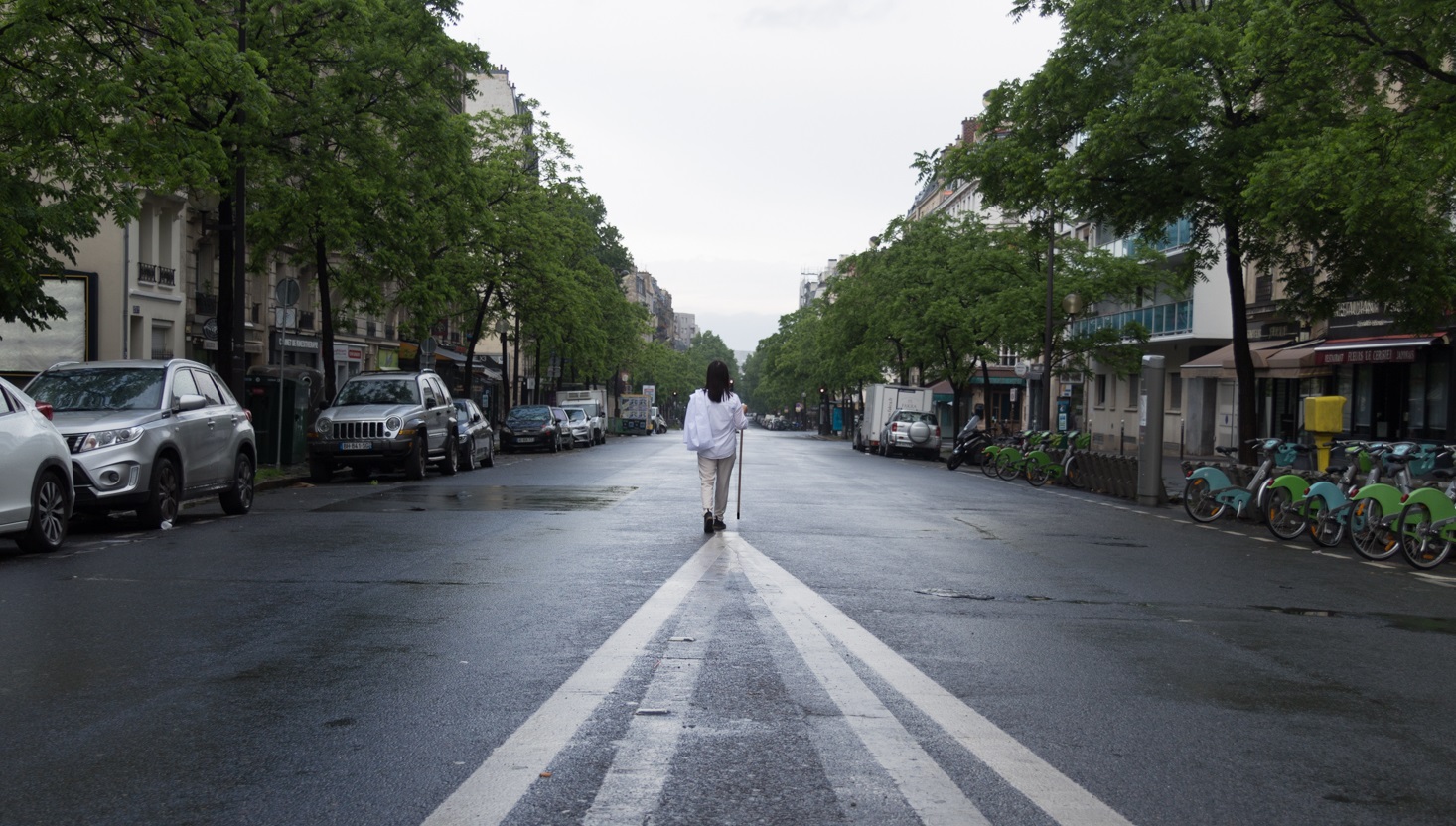
Kubra Khademi is an Afghan artist born in 1989. As a performer and feminist she explores her life as a woman and a refugee through her work. Kubra Khademi studied the visual arts at the University of Kabul and Beaconhouse University in Lahore, Pakistan. That is where she started debuting performances for public places. Upon returning to Kabul she continued this work, laced with a certain criticism of Afghanistan’s totally male-dominated patriarchal society. In 2015 she performed Armor in the streets of Kabul. Following this highly polemical performance her life was threatened and she was forced to flee her country in the following days. She is currently based in Paris and has received the title of Chevalier de l’Ordre des Arts et des Lettres (Knight of the Order of Arts and Letters) from the French Minister of Culture.